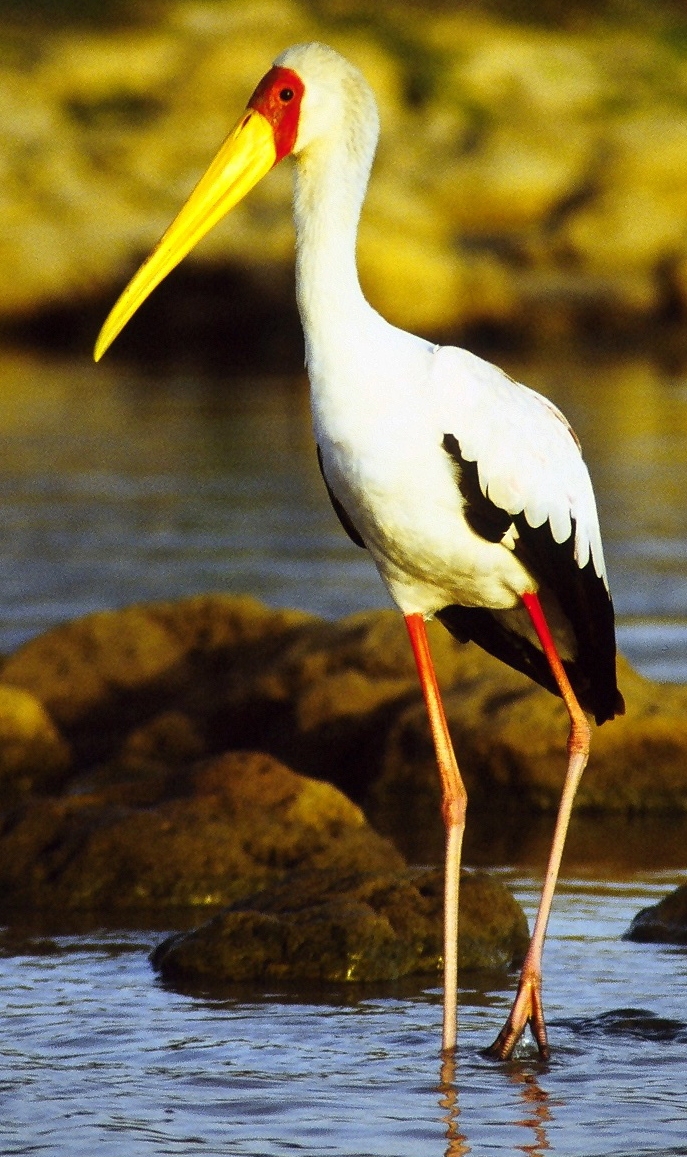|
| 질의: large white | 결과: 1481번째/2106 | |
Yellow-billed Stork (Mycteria ibis) - Wiki
| 제목: | Yellow-billed Stork (Mycteria ibis) - Wiki
| |

| 해상도: 687x1157
파일크기: 588089 Bytes
등록시간: 2007:10:23 15:26:58
|
Yellow-billed Stork
From Wikipedia, the free encyclopedia
[Photo] Yellow-billed Stork (Mycteria ibis) on the shores of Lake Baringo, Kenya. Date 2006. Author Mehmet Karatay (http://commons.wikimedia.org/wiki/User:Mehmet_Karatay). Copyright (C) 2006 Mehmet Karatay
Permission is granted to copy, distribute and/or modify this document under the terms of the GNU Free Documentation License, Version 1.2 or any later version published by the Free Software Foundation; with no Invariant Sections, no Front-Cover Texts, and no Back-Cover Texts. A copy of the license is included in the section entitled "GNU Free Documentation License". |
The Yellow-billed Stork, Mycteria ibis, is a large wading bird in the stork family Ciconiidae. It occurs Africa South of Sahara and in Madagascar. Its a medium-sized stork. Length: 97 cm; avarage body weight for males: 2.3 kg; for females: 1.9 kg. Plumage mainly pinkish-white with black wings and tail; bill yellow, blunt, and decurved at tip. Immature birds are greyish brown with dull greyish brown bill, dull orange face and brownish legs.
The similar Painted Stork (Mycteria leucocephala) is an Asian bird.
The Yellow-billed Stork is one of the species to which the Agreement on the Conservation of African-Eurasian Migratory Waterbirds (AEWA) applies.
http://en.wikipedia.org/wiki/Yellow-billed_Stork
| The text in this page is based on the copyrighted Wikipedia article shown in above URL. It is used under the GNU Free Documentation License. You may redistribute it, verbatim or modified, providing that you comply with the terms of the GFDL. |
|
^o^
동물그림창고 똑똑전화 누리집
^o^
|
|